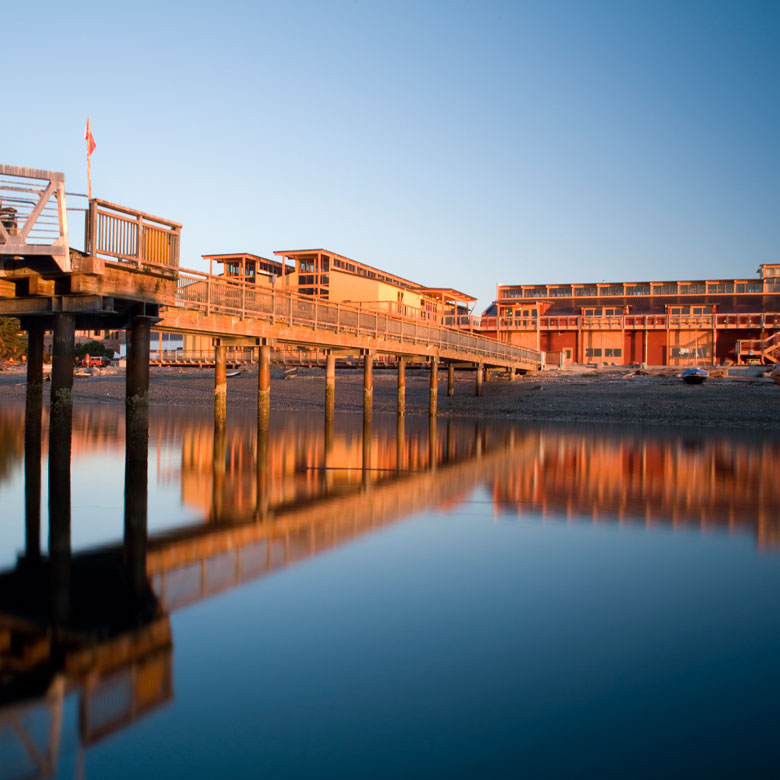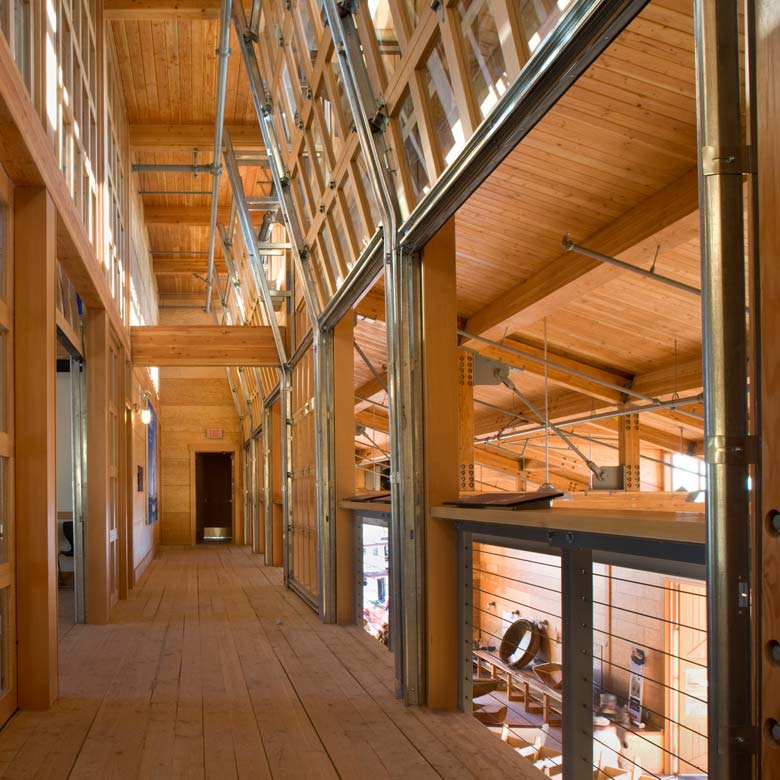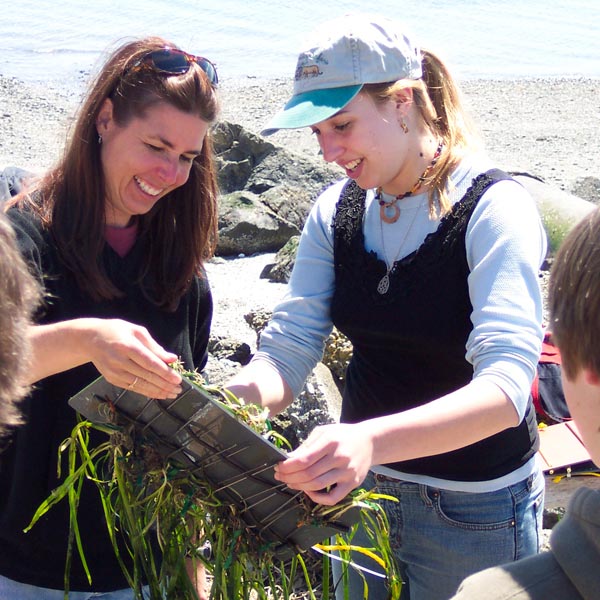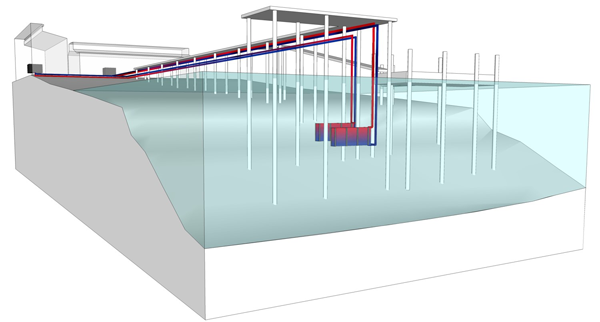Our Campus
The First LEED Gold Building on the Olympic Peninsula
We’re also the first LEED Gold nonprofit waterfront center in Washington State. Environmental stewardship is part of our core goal and mission—as is awakening a sense of wonder, connection to, and understanding of the Puget Sound and the Pacific Northwest. Designed by the Miller|Hull Partnership, our buildings are made to minimize impact on the environment, lower operating costs, reduce energy and water use, improve indoor environmental quality, and make more efficient use of materials and resources.
Site History
The land where the Northwest Maritime Center stands today had previously been labeled an “intrusion” in the National Landmark Historic District, and had been slated for a condominium project. Thanks to the efforts of the citizens of Port Townsend and Jefferson County, this prime site adjacent to downtown was saved, an effort that included the removal and proper disposal of more than 2,400 tons of contaminated soil, most of which was below the ground table line. The citizens also demanded public access to the waterfront, and a building that was compatible with the historic downtown but modern in its expression and function.

Pier Development & Coastal Restoration
Our campus not only protects, but actually improves and restores the waters of the Puget Sound. From energy use reduction to habitat restoration and material selection—all aspects of impacts were considered during the initial construction of our campus.
The new pier was constructed for moorage of larger historic vessels, and the ability to attract major events, educational opportunities for children through sailing programs, and other hands-on, on-the-water events. Extending 215 feet into the bay and encompassing 4,900 square-feet, the pier provides a safe place to enjoy the area’s natural beauty while learning about native flora and fauna.

Use of Space
Well-lit rooms with high ceilings provide flexible space for small meetings that may break off from the conference area, or for classes that serve ongoing programs. Large, vertically sliding doors create up to three separate rooms, while another closes off the space from the mezzanine. The rooms enjoy views both outside to the maritime district as well as into the Boatshop below.

Solar Panels
Thanks to a generous lead gift from the Martin Fabert Foundation and the good work at Power Trip Energy, we now boast a 24kw solar panel array on the roof of the Weissblum Maritime Heritage Building. In total, the new panels will produce more than 10% of the power needed for the building, with room remaining to add panels and increase our usage of clean, sustainable energy.
Thank you to the Miller|Hull Partnership and Nic Lehoux for the language and many of the photos used on this page.


